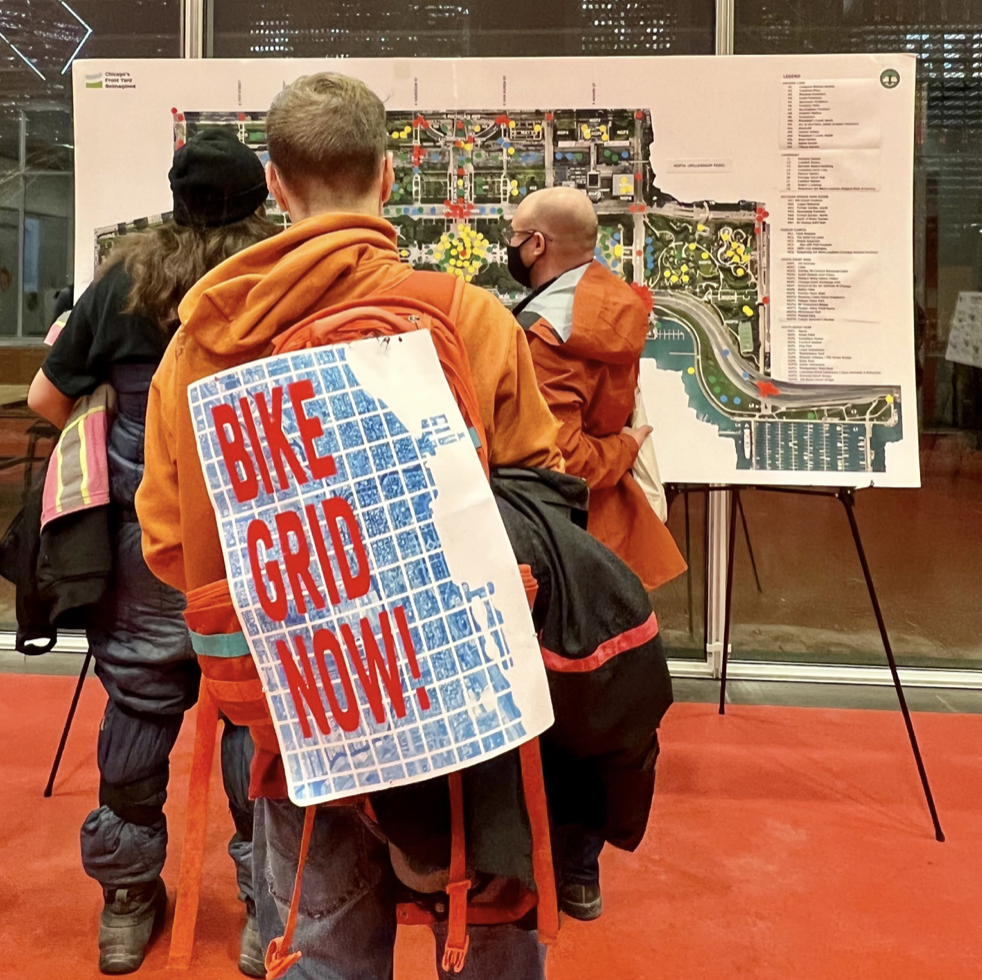The Chicago Park District hosted its second public open house for the new Grant Park Framework Plan on last week in the Ryan Learning Center at the Art Institute of Chicago. From 5 p.m. to 7 p.m., the community was invited in to learn about the goals and status of the project and voice their desires and concerns for the park and surrounding area. The meeting was the second in a series of three open house-style events that aim to gather public feedback for the new framework plan, "Chicago’s Front Yard Reimagined."
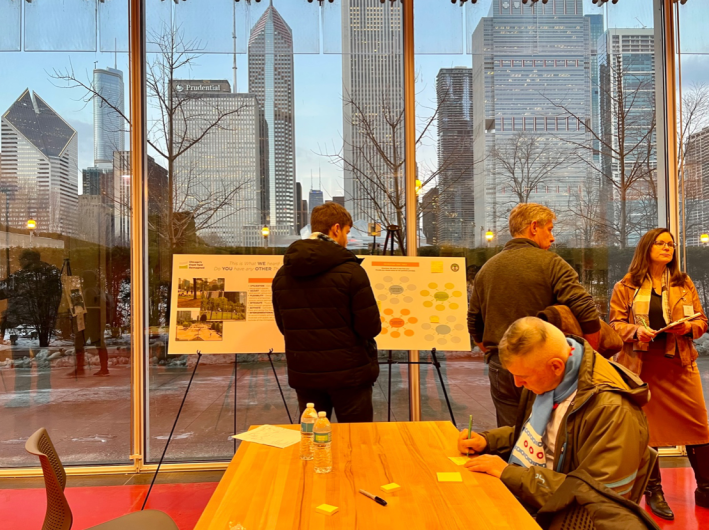
It’s been over 20 years since the last Grant Park Framework Plan was published, and the context around the park has changed. Since then an expanded Soldier Field and its surrounding North Burnham Park have opened; Millennium Park and Maggie Daley Park debuted; and Lollapalooza has established an annual residency. Residents’ use of and concerns for the park have almost certainly changed, as well. It’s time to re-evaluate and replan to ensure that Grant Park is maximally serving the community. It’s time to spruce up the front yard!
Public input is crucial to the development of a successful plan, and the design team seems to be conducting a process that effectively educates and listens to the community. The design team is led by UrbanWorks and includes Confluence, Brush Architects, Withers Strategic Solutions Consulting Group LLC, APMonarch, and Engage Civil Incoporated. The open house had multiple rooms, exhaustive historical context, lots of different types of ways to provide feedback, and at least one design team member at each exhibit, eager to talk to people as they wandered through.
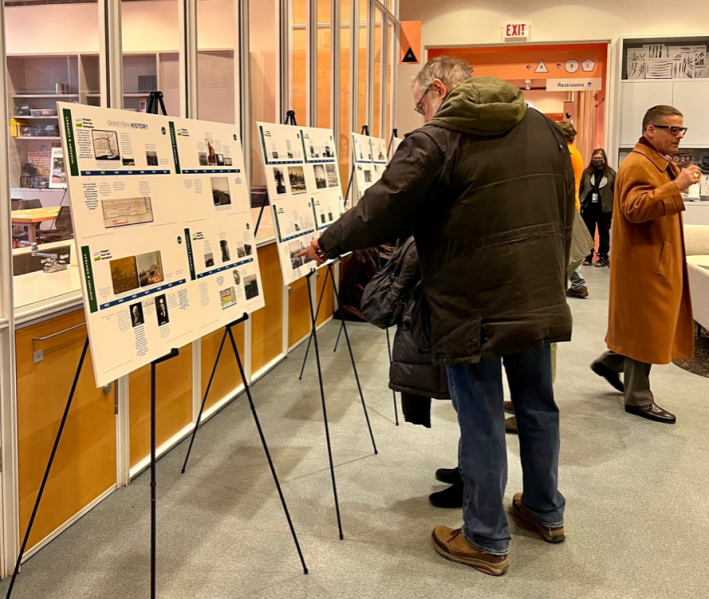
The space was set up to collect feedback in five key areas: Events, Mobility, Safety + Logistics, Recreation, and Preservation + Landscape. Each exhibit showed key takeaways from the stakeholder engagement process and had space to leave post-it note comments. In a separate display, people were given different colored sticky dots to place on a large, printed map of Grant Park and identify the locations of key landmarks, opportunities for development, opportunities for placemaking, and problem crossings. The pedestrian crossings of DuSable Lake Shore Drive at Balbo Drive, Ida B. Wells Drive, and Jackson Boulevard clearly had the most votes for being problem areas.
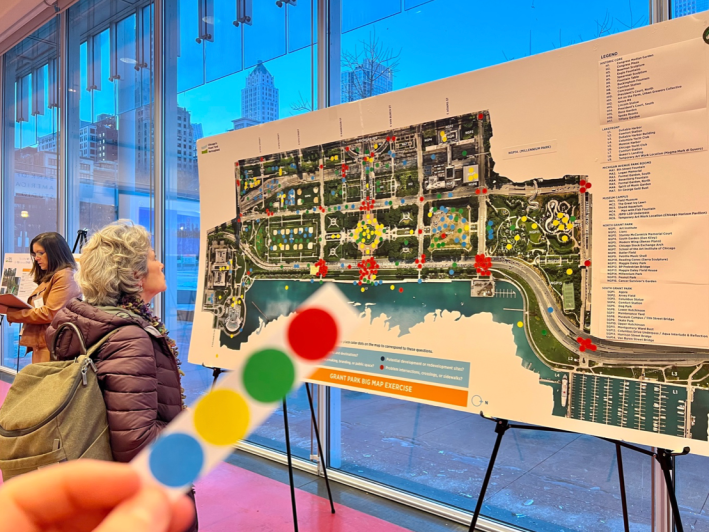
I spent most of my time at the Mobility and Safety + Logistics stations but found that pedestrian and bicyclist safety issues came up at all the other stations as well. Attendees used their post-it notes to advocate for Chicago Pedway upgrades, protected bike lanes, bike parking, real bollards protecting pedestrian islands, road diets, and a completely pedestrian- and bicycle-only area. It was clear that people are most concerned with improving safety, and prioritizing walking and biking.
One idea that may accomplish this is closing Columbus Drive to private motor vehicle traffic. Design team members, open house attendees, and the displayed notes from earlier stakeholder meetings all identified the possibility of banning private cars on Columbus from Monroe Street to Roosevelt Road. Opening the street for safe walking and biking would help fuse the north and south areas of the park into a more cohesive space, one that feels more connected. Some might fear that pedestrianizing Columbus would put more traffic pressure on the Michigan Avenue to the west and DLSD to the east, where there are already the most treacherous conditions for walkers and bikers. On the other hand, there's also the principal of "traffic evaporation": When you provide less space for cars, there tends to be less driving. The design team is conducting traffic analysis as part of this project.
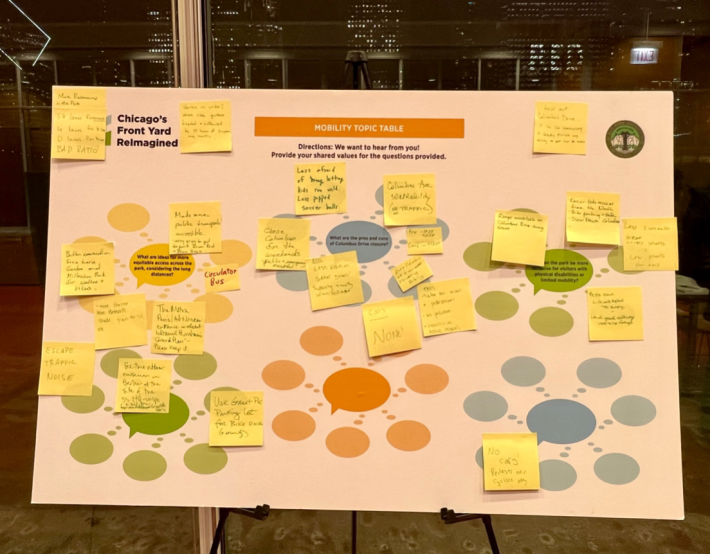
Other design interventions (albeit less exciting than the idea of repurposing Columbus) could significantly improve safety and the experience of traveling around the park on foot or bike. Road diets, longer crossing signals, curb cuts, bollards, more street trees, raised crosswalks were all mentioned by design team and community members. The importance of pedestrian and bicyclist safety was front and center at the open house. I hope that gets adequate priority in the final framework plan.
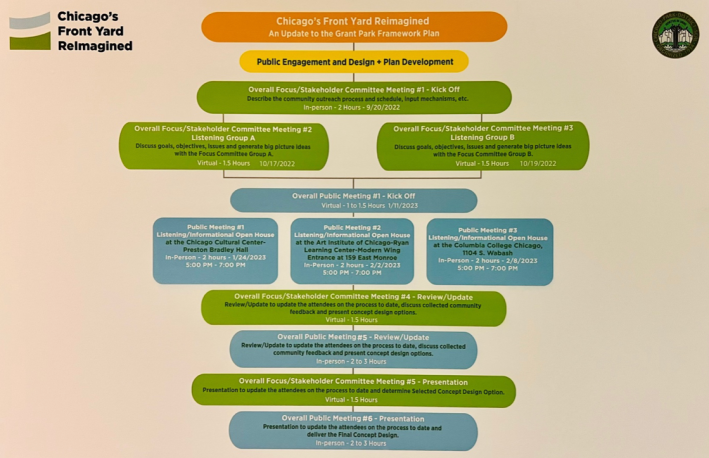
If you agree, and want to speak up for safer and more people-friendly Grant Park street design, the Active Transit Alliance (which was involved in earlier stakeholder meetings with the design team) has outlined five areas to advocate for that would significantly improve safety and accessibility. These include safer crossings; better walking and biking infrastructure; a pedestrianized Columbus Drive; bus-only lanes, and "a truly reimagined DLSD." If you have ideas about the Grant Park Framework Plan but were unable to attend the open house, you can still submit comments via this online form.
View the presentation from last month's community meeting on the framework plan here.

Did you appreciate this article? Please consider making a tax-deductible donation to help fund Streetsblog Chicago's next year of publication. Thanks!
